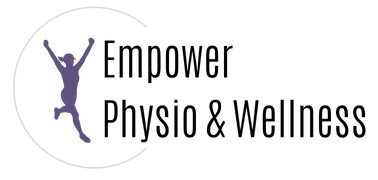There are things I look back on that I said and did early in my career that I’ve changed my stance on. Hey, that’s all part of learning and staying up-to-date on current research! Today, I want to bust some myths that I once held to be true and share what I’m telling my clients now.
I used to say: “Wear supportive shoes with arch support inserts.”
Now I say: “Be barefoot when you can and let your feet move!”
I used to think that our feet needed a ton of support and frequently told all my clients, friends, and family to get the most supportive shoes. I even bought super supportive shoes for myself.
But then I had a realization: All this cushy, rigid, foot support is exactly like wearing a back brace all day. I would never advise a client to do that because it would make their core and back muscles weak and wouldn’t allow the spine to move.
The feet are the same way! Super supportive shoes and inserts weaken the foot muscles and don’t allow the joints of the foot and ankle to move. This is the opposite of what we want. Our feet are our base of support. They dictate the movement of everything above them including the knees, hips, pelvis, and spine. If your feet are weak and can’t move optimally, then none of those other joints will move well either.
How did I come to this conclusion? I took courses, did research, and experimented with my footwear. I ditched the motion-control shoes with tons of arch support and opted for more of a minimalist shoe with a wide-toe box. My first pair was the Altra Rivera and let me tell you, they are LIFE. CHANGING.
The wide-toe box allows the toes to spread and move how they should. Squished toes lead to squished feet and no one walks normally when their poor little toes have a tourniquet around them.
Additionally, shoes with less support, also known as barefoot shoes or minimalist shoes, allow the feet to move through pronation (arch dropped) and supination (arch lifted). We need both! Historically, experts saw pronation as something that needed to be corrected, but it’s actually necessary. Challenges can arise when the feet are stuck in pronation and can’t access supination. On the flip side, some people have very high arches and are stuck in supination with no ability to access pronation.
Pronation is the foot position that absorbs shock. This is very helpful for reducing the impact on the ankles, knees, and hips when walking, running, and jumping. Supination makes the foot rigid, which is important for propelling the body forward. This is necessary for having power when walking, running, and jumping. If your footwear is limiting pronation or supination, you will lose either shock absorption or rigid propulsion.
Now, please please please don’t throw out all your shoes and switch over to minimalist shoes cold turkey. Your feet will hate you. This process needs to happen gradually and building foot strength and mobility first is very important. There are lots of factors to consider like your foot type, current strength and mobility level, and what kind of shoes you currently wear. For specific recommendations, please reach out to us directly!
One thing you can do is to start spending more time barefoot. Start with 15-20 minutes, 1-2 times per day, and build from there. This will increase your foot strength and allow your feet to move freely. Work up to 2-3 hours of barefoot time.
I used to say: “Keep your knees behind your toes when you squat.”
Now I say: “Your knees can go beyond your toes when squatting and lunging.”
The knees behind the toes cue originated from research back in the early 2000s that showed that when the knees went beyond the toes in a squat, there was increased torque on the knee joint. This doesn’t paint the whole picture.
As you can see from this graphic, it’s easier to squat deeper and keep the trunk upright if your knees go beyond the toes. When the trunk flexes forward as shown in the second picture, it places more force on the low back and hips. So is that actually better? I argue no.
When the knees come forward and the trunk stays more upright, there is a better relationship between the ribs and the pelvis. They can stay stacked on top of each other, which is the best position for allowing full motion in the hips and shoulders, and therefore the rest of the body.
Image credit: phyeasyque.com
Lastly, we have to consider how our knees move in everyday life. They must come forward beyond our toes when going down a flight of stairs. Try it for yourself. You’ll find it’s pretty impossible to do without flailing your trunk all over the place. Now, if your knees bother you with deeper squatting, I’d say that your best solution is to figure out why. You’re likely missing mobility in your spine, pelvis, hips, feet, or ankles and this is putting increased strain on your knees. Fix that and you just might find that squats feel better.
Image credit: posturedirect.com
I used to say: “Squeeze your shoulder blades down and back during upper body exercises.”
Now I say: “Let your shoulder blades move throughout upper body exercises.”
The shoulder/shoulder blade complex is one of the most mobile and dynamic stabilizers in the body. Most joints have a lot of bone stability, but the shoulder blade is primarily stabilized by muscle. These muscles include the mid trap, low trap, rhomboids, and serratus anterior.
I want you to think of the shoulder blade, aka the scapula, as the core of your shoulder. It provides stability for the shoulder joint and rotator cuff to move and work optimally. You want good stability in the scapula, however, it must be able to move to provide the best stability.
As you can see in the graphic, the shoulder blade has to rotate upward to get your arm overhead. This scapular upward rotation accounts for ⅓ of your overhead mobility!
Image credit: physiopedia
If your shoulder blade is squeezed down and back, how the heck are you going to get your arm overhead? While this motion does activate some of the shoulder blade stabilizers, it inhibits other very important muscles like the serratus anterior. These inhibited muscles bring the shoulder blade forward, which has historically been seen as “bad,” but is in fact very necessary.
So instead of pinning your shoulder blades down and back, let your shoulder blades move freely. Separately, you can focus on exercises that stabilize the scapula.
There you have it – 3 things I’ve changed my stance on as a PT. I hope you’ve learned something new. If you have questions or want more details about any of the topics I covered here, let’s chat.



